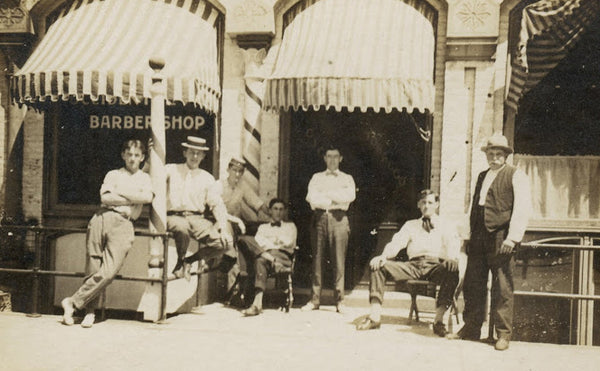Signs of the Times: The History of Trade Signs

Throughout American history, trade signs stand as vivid markers of commerce, innovation, and the evolution of small businesses. These weathered relics, adorned with hand-painted letters and symbols, have witnessed the ebb and flow of daily life, silently signaling the products and services offered within.
The History of Trade Signs:
The practice of using trade signs to identify businesses dates back centuries, finding its roots in medieval Europe. In a time when many people were unable to read, these visual emblems served as a universal language, guiding patrons to various trades. As commerce flourished in America, trade signs became commonplace, ranging from simple wooden boards to intricately designed and painted symbols that adorned storefronts, capturing the essence of the businesses they represented.

Why Collect Antique Trade Signs:
Collectors are enamored with antique trade signs for their historical charm, unique craftsmanship, and the stories they tell about the businesses they once graced. Beyond their aesthetic appeal, these signs serve as tangible artifacts that reflect the entrepreneurial spirit of America's past. The hand-painted lettering and distinctive symbols transport collectors to a time when personal artistry played a crucial role in business branding. Each sign represents a snapshot of a specific trade, offering a glimpse into the economic landscape of a particular era.
Cultural Importance of Collecting Trade Signs:
The act of collecting antique trade signs is an endeavor that goes beyond personal interest. These signs are a testament to the ingenuity, craftsmanship, and entrepreneurial resilience that shaped local economies across the nation. Preserving these artifacts ensures that the visual language of trade and commerce is not forgotten, providing future generations a physical link to the high point of storefronts and markets.

Examples of Commonly Collected Trade Signs:
Numerous trade signs have become sought-after treasures among collectors. Examples include the iconic barber poles, apothecary signs featuring mortars and pestles, blacksmith anvils, cobbler's boots, and butcher’s saws and cleavers. Each sign carries with it a unique charm embodying the craftsmanship and creativity of artisans who sought to visually communicate their trade to the world.
Antique trade signs serve as windows into the vibrant history of American commerce, offering a tangible connection to the small businesses that shaped local communities. As collectors continue to cherish and preserve these visual relics, they play a vital role in safeguarding the cultural heritage of European and American trade.







